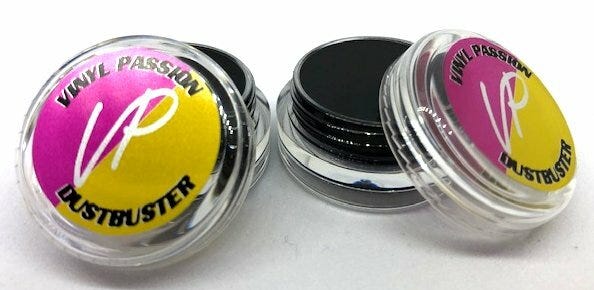Vinyl stylus: the nuts and bolts
Spotting signs of wear, some cleaning tips, and how to tell if your stylus needs replacing
You know your stylus matters. But what is, exactly, this tiny yet tremendously powerful creature?

The specifics
A stylus is an electromechanical transducer that reads analogue audio signals from the grooves of a record.
The tip is often made of industrial diamond. Other (more affordable) materials include sapphire and ceramic.
You should never touch your stylus. Always exercise the utmost care when interacting with it.
The mechanics
As your stylus travels through the grooves of a record, it wears itself as well as the record.
Cleaning your records before spinning is essential to minimise wear on both counts.
It’s a common saying that playing vinyl is essentially letting a diamond scratch the surface of a record to create music. (This is not entirely correct, but the imagery is pretty).
As your stylus wears over time, it loses its ability to track and read accurately.
This means, folks, that you should clean and replace your stylus regularly, and avoid playing records with a heavily worn or dirty stylus.

Maintenance
You can tell your stylus needs replacing when your records are no longer sounding like they used to. Common signs of stylus wear include higher levels of distortion, increased crackling, and more surface noise than usual.
Basically, a muffled and weaker sound throughout.
You should also check for physical signs of wear. If your stylus looks twisted, crooked or otherwise misshapen, or if it skips or jumps out of the grooves during playback, it needs replacing.
When to replace will depend on your stylus and how often you spin. Most manufacturers recommend replacing it every 300-1,000 hours of playback.
If in doubt, check with your manufacturer. If you spin often (e.g. a record a day), a common rule of thumb is roughly every 10-12 months.
More advanced types of styli (e.g. microline) will last longer. I’ll give you an overview of the main types in the next instalment.
Cleaning
Anything obstructing the normal contact between stylus and record will affect the quality of the reading.
Ideally you should clean your stylus before and after each spinning session. Most cleaning kits come in the form of fluid and a small brush.
Different products abound, but Analogue Seduction and GrooveWasher are safe bets.
Personally, I am trialling out Vinyl Passion Dust Buster, mainly for convenience. Unlike others, this one is not a fluid: it’s a sticky substance said to give your stylus a very deep clean more quickly than others.
Routine matters
Try to incorporate a cleaning routine. Consistency is key.
Most products from reputable manufacturers, when used correctly, will produce similar results.
Choose one that works for you and establish a cleaning routine that you can stick to every single time you spin. This will matter more over time than the specific products you use.
That’s all for today. Stay tuned for more.
Thanks for reading and/or listening. Happy spinning!






My Dad was so great about cleaning his records and stylus every time. I shudder now to remember loading pennies on my arm to fix a skip. Yikes! I'll need to look into one of these options.
Great info, Andy, and well-presented! I love how you highlight the more important words and directives in the piece! That's helpful. It's interesting, too, to see the new products available for cleaning (with the bright colors, etc). Back in the day, as you can imagine, cleaning materials (cloths, brushes, stylus cleaners) were relegated to few and far-between high-end sound purveyors, and maybe (with cheaper, lower-quality products) your neighborhood record store.
It'll be fun to await your further dive into stylus-cleaning products, as well as seeing how well your Vinyl Passion "goo" performs for you! Cheers!